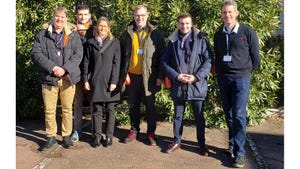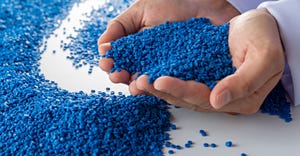A new 3D printing technology employs tungsten material
Two companies have collaborated to bring a new 3D printing technology and a new material to the commercial marketplace. ExOne Company (www.exone.com), which manufactures and sells 3D printing equipment, and 3D printing service bureau, ‘rapid prototype + manufacturing (rp+m)’, announced the result of their partnership to bring 3D printed tungsten to the medical imaging market via the M-Flex 3D Printing System.
September 23, 2013
The service bureau rp+m is the first 3D printing company to offer open-source printing of tungsten, a viable alternative to lead that is non-toxic, blocks radiation with equal efficacy to lead, and requires 40-50% less wall thickness and less mass to deliver equal protection, according to a release from rp+m (www.rpplusm.com). ExOne offers pre-production collaboration and printer products through Production Service Centers, which are located in the U.S., Germany, and Japan. ExOne builds 3D printing machines at its facilities in the U.S. and Germany, and also supplies the associated products, including consumables, replacement parts, and services, including training and technical support, necessary for purchasers of its machines to print product.
Currently, lead is a material facing global restrictions due to safety and toxicity issues, yet lead has been the standard for shielding patients, healthcare providers and their environments from the harmful effects of ionizing radiation. According to rp+m, the EU Restriction of Hazardous Substances (RoHS) directives requires manufacturers to eliminate lead-based components and seek out a new replacement material that can shield radiation as effectively as lead can.
Using ExOne’s M-Flex 3D printer, rp+m, in collaboration with its partner, Radiation Protection Technologies (RPT), can deliver bundled lead replacement solutions for the medical imaging and aerospace markets. Previously, RPT has successfully replaced lead-based components using plastic injection molding with tungsten filled polymer. However, the new technology rp+m offers does not require injection molding, so RPT can provide customers parts faster and without the need for capital costs.
“3D printed bonded tungsten is a great solution for radiation shielding because the M-Flex can create complex shapes for these applications that would be difficult to create with conventional methods of manufacturing,” said Rick Lucas, ExOne’s CTO in a release. “Our collaboration with rp+m demonstrates the power of ExOne’s strategy in engaging customers in the early stages of the materials development process, yielding direct applications in new markets.”
Dana Foster, marketing manager for rp+m, told PlasticsToday that the new M-Flex machine from ExOne will allow the company to develop new materials such as stainless steel, copper and others. “Also, with the 3D printing process the customer doesn’t have to purchase mold, so we can provide one-off parts per customer requirement, when they don’t have a high quantity of parts,” she explained.
rp+m provides an array of additive manufacturing technologies includine 3DP (Binder Jetting); DMLS (Direct Metal Laser Sintering) from EOS; FDM (Fused Deposition Modeling; Polyjet, SLA and SLS. However, Foster noted that at this summer’s RAPID 2013 show, there was a great deal of interest in the use of metals for 3D printing.
“The majority of people we spoke with at the RAPID show, while they inquired about the polymer materials, were extremely interested in the metals,” Foster said. “Some are interested from the aspect of being able to build cores and cavities for low-volume injection molding in a few days rather than a few weeks. We listen to customers and seek out where their needs are. If they’re interested in 3D printing of metals, we’ll meet those requirements.”
Matt Hlavin, CEO of rp+m commented, “We believe ExOne’s M-Flex machine is unique because of its ability to use multiple types of material and the machine’s fast print speeds. The ExOne team is clearly committed to forming strategic relationships with innovators, such as rp+m, to drive their 3D technology to new frontiers. rp+m will continue to work with ExOne to develop other materials and applications for the M-Flex machine.”
About the Author(s)
You May Also Like




